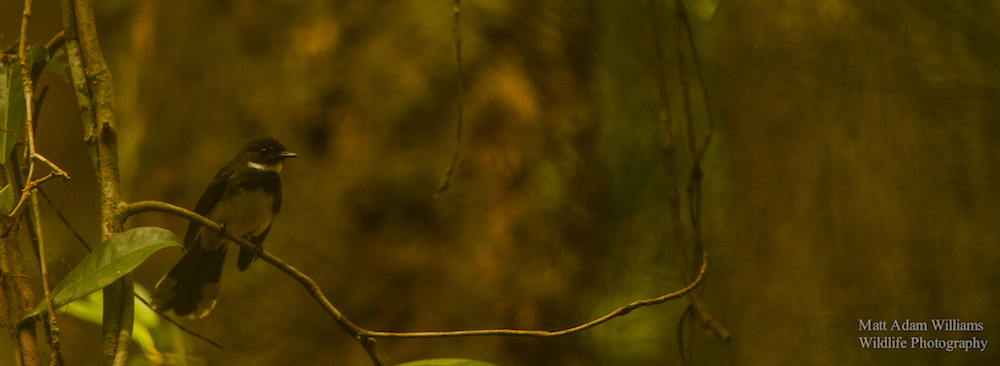Bulbuls and fantails
This blog was originally written for the Orangutan Tropical Peatland Project in my role as their Communications Manager.
One of my favourite pastimes is wildlife photography, and so an opportunity to spend time in a rainforest in Indonesia is quite a boon. But, as a birdwatcher too, it can be a frustrating environment. I’ve written about this previously on our blog. The dense vegetation makes seeing the bird you can hear easier said than done.
A few days ago while in our forest camp I went for a wander to see what I could encounter.
I find one of the best approaches to be simply sitting and waiting. Even if it means the mosquitoes slowly begin to gather around you in ever-increasing numbers, it can be worth the wait.
So, I took a seat on a tree root and waited. Sure enough, as usual, nothing happened for the first fifteen minutes or so.
But, after things settled down, birds started to reappear. Over the course of an hour I was graced with great views two beautiful species of birds.
The pied fantails came first, a pair of them. They flitted quickly between trees, chasing each other. This could have been a male female pair engaged in a mating display, the way one was pursuing the other, then perching to fan out his beautiful tail, which gives the species its name.
This dark brown bird has a beautiful white bib on its neck, a white belly and white flashes in the tail feathers it fans.
According to BirdLife International the species is common, stable and very widespread throughout Southeast Asia.
You can hear the bird’s call here.
While the fantails were providing me with entertainment and photo opportunities, another bird suddenly appeared right above my head. Even after I got back to the office, it took me a while to identify this species, since it is slightly more understated than the pied fantail and looks similar to a few others.
This dappled brown bird is the red-eyed bulbul. It’s slightly duller than the pied fantail but amidst the drab brown plumage are the piercing red eyes which stand out when the bird is as close as this one was to me.
This species is slightly more confined to Indonesia and Malaysia, as well as Brunei, Singapore, Thailand and Burma. While the slightly more widespread fantails are believed to be stable, the bulbul is believed to be declining due to ongoing forest loss in countries like Indonesia.
While not a great deal is known about either of the population statuses of these two species, enough is known that we can differentiate these two different stories: one probably stable, one in decline.
Birds are often referred to as key indicator species: their fate can indicate the fate of the habitat and other animals around them.
The bulbul in particular tells the story of the vulnerability of species that are dependent on the rainforests found in this part of the world. Threats like logging and conversion to palm oil continue to place a growing number of species from these birds to the orangutans and other primates we focus on in the Sabangau rainforest of Indonesia.


